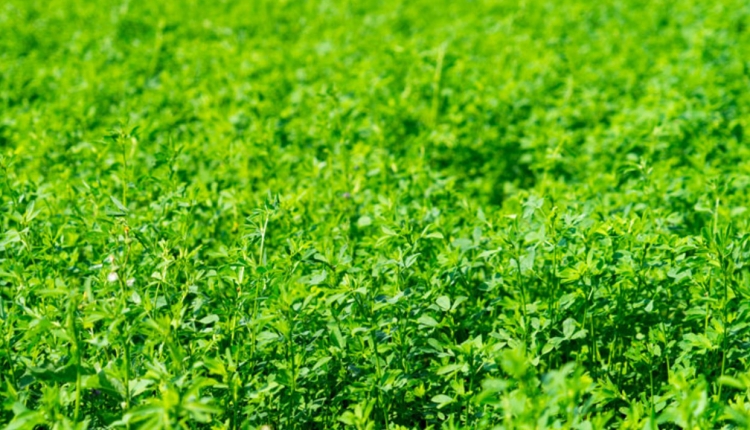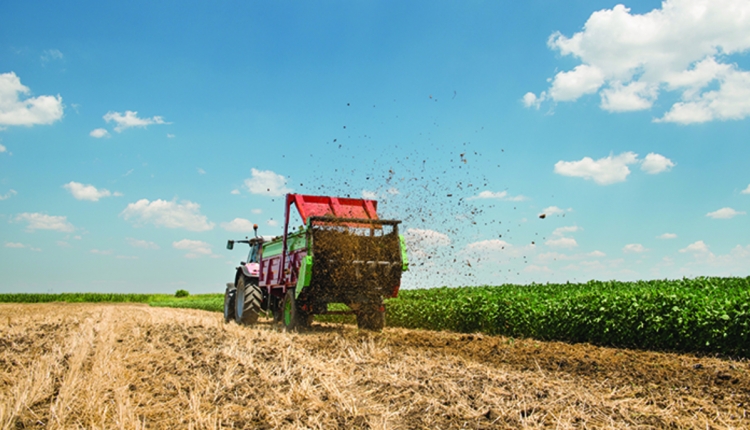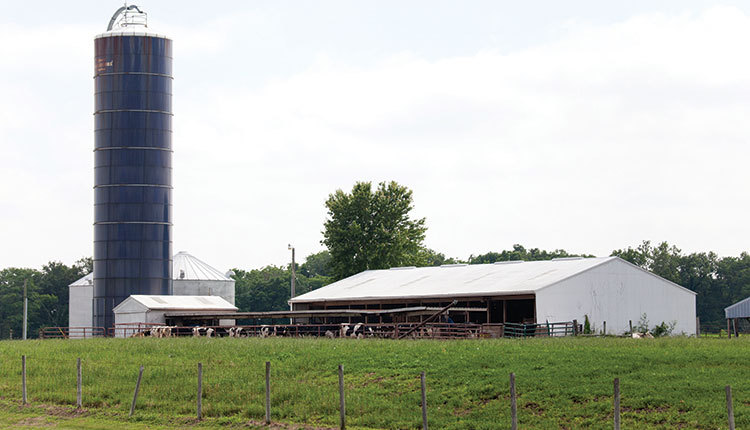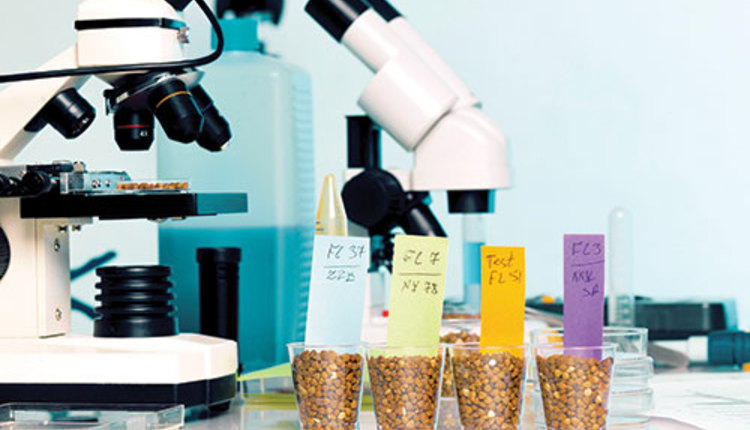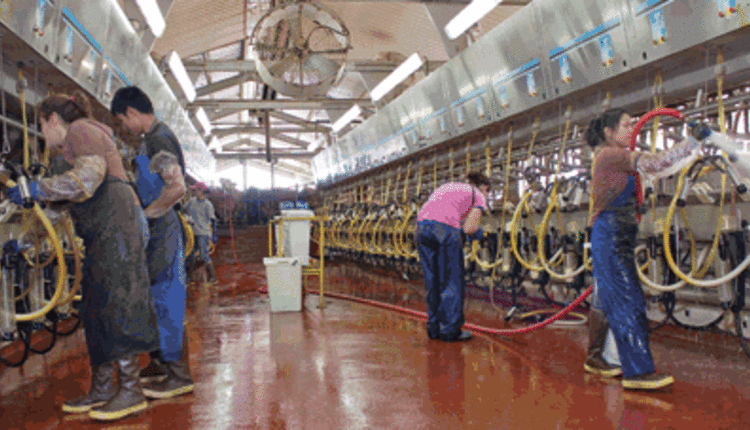The author is a dairy management and nutritional consultant having worked with large and small dairy herds in the West and Northeast, as well as Hawaii.
The foundation of our rations has been and always will be forage. That's the way the ruminant's digestive system works.
Dairy farmers, with the help of ruminant scientists, have been able to fine-tune the modern dairy cow diet so that Holsteins easily can produce upwards of 30,000 pounds of milk per lactation. Cows are bigger, healthier, and better cared for today than ever before. Every year the physiology of the rumen becomes less of a mystery.
At the heart of a high-producing cow's diet is high-quality forage. Every dairy farmer has learned that the better the forage that's fed to a herd of cows, the healthier the cows are and the more milk they can produce. The key to making it all happen is knowing which forages are good and which are not. Therein lies the challenge.
Most of us who have been around dairy farming and forage production long enough can tell the difference between a really good bale of hay and a really bad bale or a good pile of corn silage compared to a bad pile. Often, just the sight, the smell, and the texture of hay, hay silage, or corn silage will guide us most of the way toward picking a feed for a cow or heifer diet.
It's not that simple
But who among us hasn't been confounded by the subtle differences between two hay crops . . . hay that looks the same but doesn't milk the same. Why is it that one year's corn silage milks better than another? Isn't all fiber the same? For an answer, we must turn to the modern forage testing laboratory that can tell us amazing things about forage while redefining forage quality along the way.
The major components of forage generally can be separated into three groups: protein, carbohydrates, and minerals. All three groups have nutritional significance.
Protein and carbohydrates have subgroups or subfractions within them, and a cow's rumen processes those fractions at different rates. Microbes in the rumen utilize some of those fractions quickly while others are degraded more slowly and still others are hardly touched and exit the rumen to be absorbed through the small intestine.
Laboratory assays for crude protein and fat were developed many years ago. Total digestible nutrients (TDN) remained the gold standard of energy calculations for many decades of the previous century. Fifty years ago, all a dairy farmer needed to know was the moisture, crude protein, and TDN to make an intelligent decision about the quality of a given forage. Today, though, with the help of modern laboratory analyses of the different nutrient fractions, diet formulations have become more sophisticated allowing nutritionists to meet a dairy cow's nutritional needs on a variety of production levels.
Focusing on fiber
Ruminant scientists have determined that, within the carbohydrate portion of forages, there are fractions that are fibrous and fractions that are not. They have developed laboratory assays to determine what they are, and those fiber fractions have come to be known by the name of the test that determines them . . . acid detergent fiber (ADF) and neutral detergent fiber (NDF). Furthermore, it's now known that all NDF fiber is not the same, and it degrades at different rates in a cow's rumen.
Laboratory procedures now are available to determine those rates. Heat damage in a forage can bind protein to fiber making it less available in the rumen. Forage labs are able to determine how much protein is bound up in both the ADF and NDF which provides additional information about the quality of the protein.
All of this new knowledge has allowed dairy scientists to gain a better understanding of what they may expect rumen microbes to do with a given forage, allowing them to determine how much metabolizable energy to expect from a feedstuff's fermentation. No longer does a TDN calculation for a forage provide the information needed to fine-tune a dairy cow diet. Knowledge of the different nutrient fractions in forages enables us to predict what the dynamics of the rumen will be and how much milk production we can expect. Today, a standard lab analysis includes crude protein, soluble protein, ADF, NDF, NDF digestibility, ADIP, NDIP, fermentation acids, lignin, starch, sugar, and fat along with energy calculations and minerals. All of these measures can be incorporated into computer models to evaluate rations and predict milk production.
Many of the current assays being run in forage labs such as fiber digestibility, starch, and sugars are the result of in vivo and in situ research being conducted on cows at dairy research facilities. The complexities of the rumen fermentation continue to be unraveled as we learn more about how the different fractions of feedstuffs interact with rumen microbes.
Discussions at the 2009 Cornell Nutrition conference concluded that there are at least two pools of starch that need to be considered in dairy cow diets. One is quickly utilized by microbes while the other bypasses the rumen to be metabolized in the intestines. Paul Sirois, director of the Dairy One Laboratory in Ithaca, N.Y., says that the area of starch digestibility is now being considered in his lab in an effort to more accurately predict how starch is metabolized. Sirois and his counterparts at other forage labs now face the challenge of developing and standardizing the procedures that will accurately analyze those different fractions.
Beginning in the 1980s, spectroscopic technology was introduced as a means to rapidly assess forage quality. Near infrared reflectance spectroscopy (NIRS) allows laboratories to rapidly analyze samples for multiple nutrients. Since its humble beginnings, this computer- driven technology has evolved into an extremely powerful and accurate means of quickly testing forages and getting results back to dairies and nutritionists. Paul Sirois noted that NIR testing now accounts for 80 percent of all the forages tested in his lab.
Forages must be analyzed by a competent forage testing lab on a routine basis to monitor forage quality and ensure consistent diets are fed to our cows. The forage analysis industry works very hard to standardize procedures, but even so, there can be minor differences between labs. A dairy farmer or nutritionist should limit his business to one lab to maintain continuity of results.
Forage testing has come a long way in just a short period of time and has proven itself to be a useful tool for both growers, enabling them to establish the market value of their forages, and for dairy farmers in determining the best way to utilize forages and balance a cost- effective diet in a feeding program. As profit margins remain tight or nonexistent for the foreseeable future, the economic value of forage has re-emerged. It is nearly imperative that forages be tested for their nutritional value and used to their maximum advantage.
Click here to return to the Crops & Forages E-Sources
100110_20
The foundation of our rations has been and always will be forage. That's the way the ruminant's digestive system works.
Dairy farmers, with the help of ruminant scientists, have been able to fine-tune the modern dairy cow diet so that Holsteins easily can produce upwards of 30,000 pounds of milk per lactation. Cows are bigger, healthier, and better cared for today than ever before. Every year the physiology of the rumen becomes less of a mystery.
At the heart of a high-producing cow's diet is high-quality forage. Every dairy farmer has learned that the better the forage that's fed to a herd of cows, the healthier the cows are and the more milk they can produce. The key to making it all happen is knowing which forages are good and which are not. Therein lies the challenge.
Most of us who have been around dairy farming and forage production long enough can tell the difference between a really good bale of hay and a really bad bale or a good pile of corn silage compared to a bad pile. Often, just the sight, the smell, and the texture of hay, hay silage, or corn silage will guide us most of the way toward picking a feed for a cow or heifer diet.
It's not that simple
But who among us hasn't been confounded by the subtle differences between two hay crops . . . hay that looks the same but doesn't milk the same. Why is it that one year's corn silage milks better than another? Isn't all fiber the same? For an answer, we must turn to the modern forage testing laboratory that can tell us amazing things about forage while redefining forage quality along the way.
The major components of forage generally can be separated into three groups: protein, carbohydrates, and minerals. All three groups have nutritional significance.
Protein and carbohydrates have subgroups or subfractions within them, and a cow's rumen processes those fractions at different rates. Microbes in the rumen utilize some of those fractions quickly while others are degraded more slowly and still others are hardly touched and exit the rumen to be absorbed through the small intestine.
Laboratory assays for crude protein and fat were developed many years ago. Total digestible nutrients (TDN) remained the gold standard of energy calculations for many decades of the previous century. Fifty years ago, all a dairy farmer needed to know was the moisture, crude protein, and TDN to make an intelligent decision about the quality of a given forage. Today, though, with the help of modern laboratory analyses of the different nutrient fractions, diet formulations have become more sophisticated allowing nutritionists to meet a dairy cow's nutritional needs on a variety of production levels.
Focusing on fiber
Ruminant scientists have determined that, within the carbohydrate portion of forages, there are fractions that are fibrous and fractions that are not. They have developed laboratory assays to determine what they are, and those fiber fractions have come to be known by the name of the test that determines them . . . acid detergent fiber (ADF) and neutral detergent fiber (NDF). Furthermore, it's now known that all NDF fiber is not the same, and it degrades at different rates in a cow's rumen.
Laboratory procedures now are available to determine those rates. Heat damage in a forage can bind protein to fiber making it less available in the rumen. Forage labs are able to determine how much protein is bound up in both the ADF and NDF which provides additional information about the quality of the protein.
All of this new knowledge has allowed dairy scientists to gain a better understanding of what they may expect rumen microbes to do with a given forage, allowing them to determine how much metabolizable energy to expect from a feedstuff's fermentation. No longer does a TDN calculation for a forage provide the information needed to fine-tune a dairy cow diet. Knowledge of the different nutrient fractions in forages enables us to predict what the dynamics of the rumen will be and how much milk production we can expect. Today, a standard lab analysis includes crude protein, soluble protein, ADF, NDF, NDF digestibility, ADIP, NDIP, fermentation acids, lignin, starch, sugar, and fat along with energy calculations and minerals. All of these measures can be incorporated into computer models to evaluate rations and predict milk production.
Many of the current assays being run in forage labs such as fiber digestibility, starch, and sugars are the result of in vivo and in situ research being conducted on cows at dairy research facilities. The complexities of the rumen fermentation continue to be unraveled as we learn more about how the different fractions of feedstuffs interact with rumen microbes.
Discussions at the 2009 Cornell Nutrition conference concluded that there are at least two pools of starch that need to be considered in dairy cow diets. One is quickly utilized by microbes while the other bypasses the rumen to be metabolized in the intestines. Paul Sirois, director of the Dairy One Laboratory in Ithaca, N.Y., says that the area of starch digestibility is now being considered in his lab in an effort to more accurately predict how starch is metabolized. Sirois and his counterparts at other forage labs now face the challenge of developing and standardizing the procedures that will accurately analyze those different fractions.
Beginning in the 1980s, spectroscopic technology was introduced as a means to rapidly assess forage quality. Near infrared reflectance spectroscopy (NIRS) allows laboratories to rapidly analyze samples for multiple nutrients. Since its humble beginnings, this computer- driven technology has evolved into an extremely powerful and accurate means of quickly testing forages and getting results back to dairies and nutritionists. Paul Sirois noted that NIR testing now accounts for 80 percent of all the forages tested in his lab.
Forages must be analyzed by a competent forage testing lab on a routine basis to monitor forage quality and ensure consistent diets are fed to our cows. The forage analysis industry works very hard to standardize procedures, but even so, there can be minor differences between labs. A dairy farmer or nutritionist should limit his business to one lab to maintain continuity of results.
Forage testing has come a long way in just a short period of time and has proven itself to be a useful tool for both growers, enabling them to establish the market value of their forages, and for dairy farmers in determining the best way to utilize forages and balance a cost- effective diet in a feeding program. As profit margins remain tight or nonexistent for the foreseeable future, the economic value of forage has re-emerged. It is nearly imperative that forages be tested for their nutritional value and used to their maximum advantage.
100110_20









